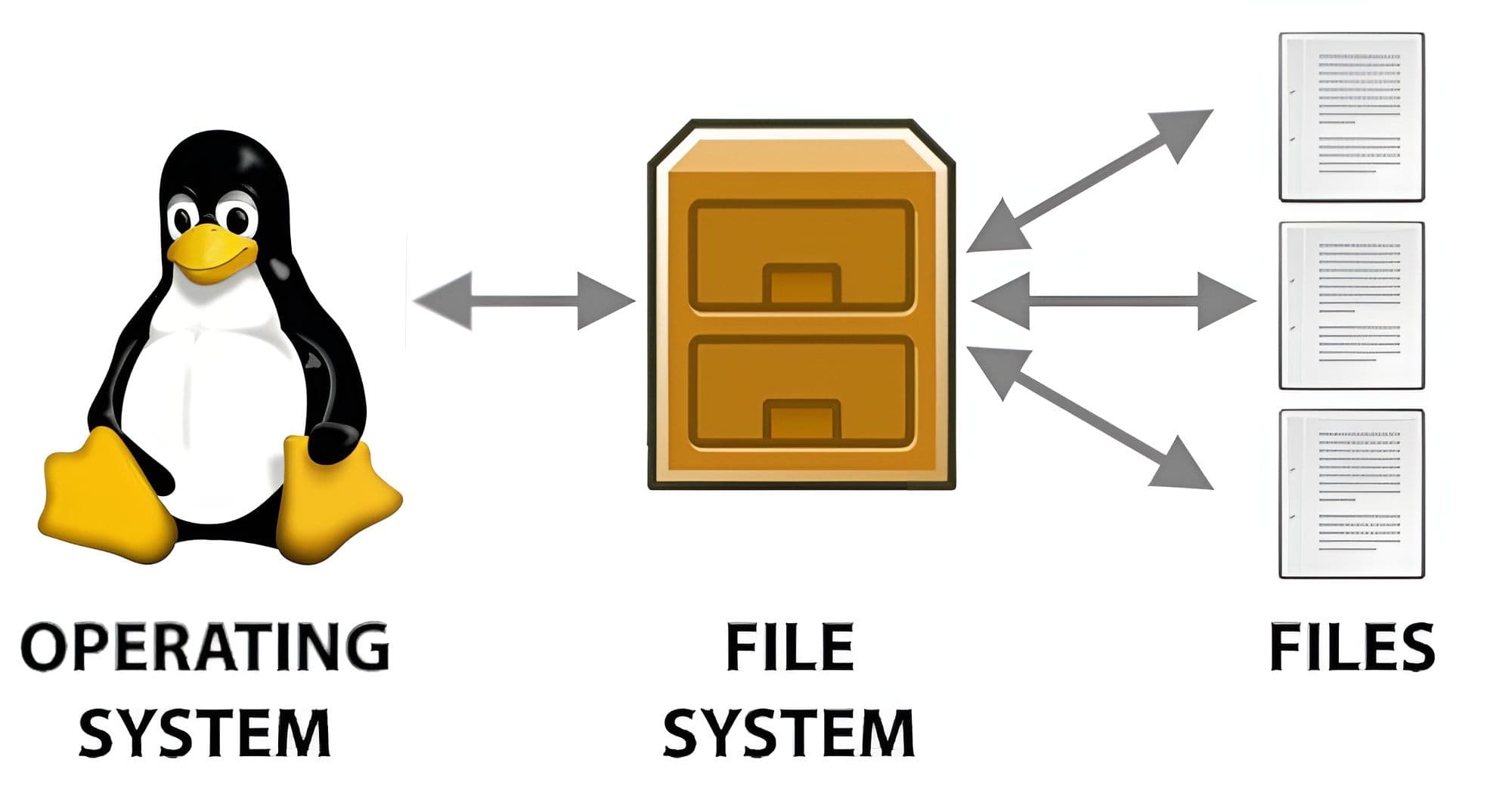Filesystem: The OS’s Librarian
Think of our computer as a tiny, slightly scatterbrained librarian and the filesystem as the librarian’s filing system. Without it, our files would be a messy pile of papers, and the librarian would cry. A filesystem is the method our operating system uses to organize, store, and find data on disks, SSDs, and USB drives—like an index, map, and set of rules all rolled into one.
What Does It Actually Do?
It decides where to write our file on the disk, how to name it, who can read it, and what time it was last edited. In short: location + names + permissions + timestamps = order.
Under the hood, each file usually has an inode (or equivalent). That inode is the file’s ID card—it stores metadata (owner, permissions, size, pointers to where the file’s data actually lives), but not the human-friendly filename itself. The filename lives in a directory entry that points to the inode. Nerdy, but neat.
Different Filesystems — Why So Many? 🤔
Different operating systems and use cases want different trade-offs: speed, reliability, max file size, cross-device compatibility, and so on. Common players we’ve probably heard of:
- NTFS — Windows’ longtime heavyweight (feature-rich: encryption, quotas, journaling).
- ext4 — The usual favorite on Linux desktops and servers.
- FAT32 / exFAT — Simple and portable; great for USB sticks and cameras but with file-size or feature limits.
Journaling — The Filesystem’s Safety Net
Some filesystems are journaling filesystems. They keep a little log (a “journal”) of what they intend to do before doing it—like writing “I’m about to delete file X” on a sticky note, then doing it.
If the power dies mid-operation, the system replays or discards incomplete steps from the journal so we don’t end up with half-deleted files or corrupted filesystem structures. It speeds recovery and reduces the chance of data loss.
Why Developers Should Care
Picking the right filesystem matters: it affects performance, reliability, and whether our external drive will work with a Mac, PC, or Linux box.
Knowing filesystem concepts (inodes, journaling, permissions) helps us debug real problems:
- “Why can’t I write to that folder?”
- “Why is our server stuck rebuilding the disk index after a crash?”
Problems that scream for someone who actually understands the storage layer.
TL;DR
A filesystem is the OS’s way of organizing data on a storage device—a mix of maps, address books, and rules that keeps our files findable, protected, and (mostly) intact when things go sideways.
Think: librarian → filing system → calm office.
